Plant Size Definitions
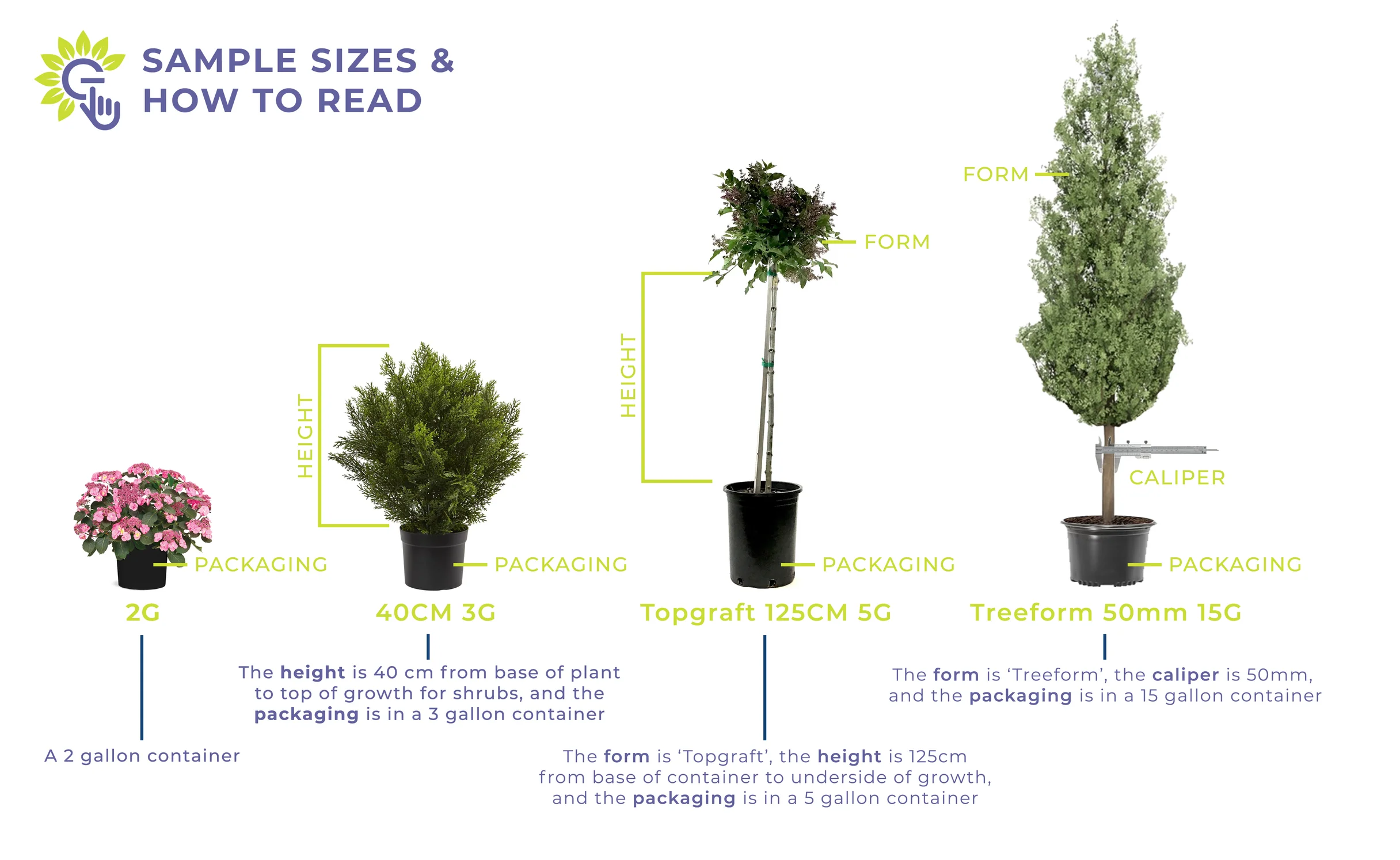

Our sizes are displayed in the following 3 part pattern: Form (if applicable) will display first, followed by Height or Caliper (if applicable), and ending with Packaging (always). Please see below for definitions of Form, Height/Caliper and Packaging.
Form
Here are some typical forms that you'll see on our sizes and a brief description or illustration.
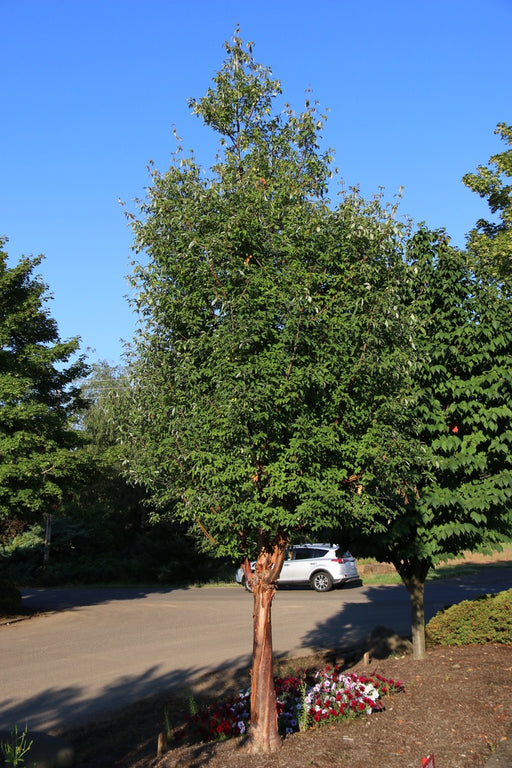
Treeform
Some plants naturally grow a strong central leader to form a canopy of branches and foliage above a defined trunk and some plants grow naturally like a shub and require pruning and training into a tree. This form is known as Treeform. Throughout our listings of plants you will see this form appear and will be followed by a size that measures height until they reach a certain age and then when the trunk is sturdy and thick enough it is measured by Caliper.
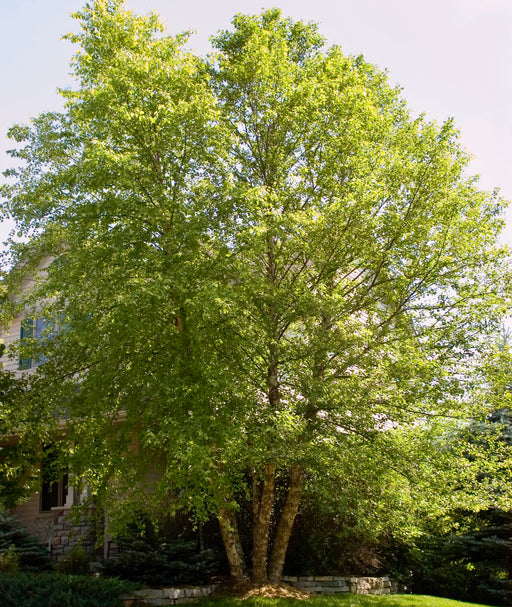
Clump
Clump or Clump from describes plants that either grow naturally or are trained to have 3 or more defined trunks. Throughout our listings you will see Clump followed by a size that measures height if they naturally grow like a shrub or are at a younger stage, and Caliper when plants naturally grow like a tree and have reached an age to be measured by the thickness of the trunk.
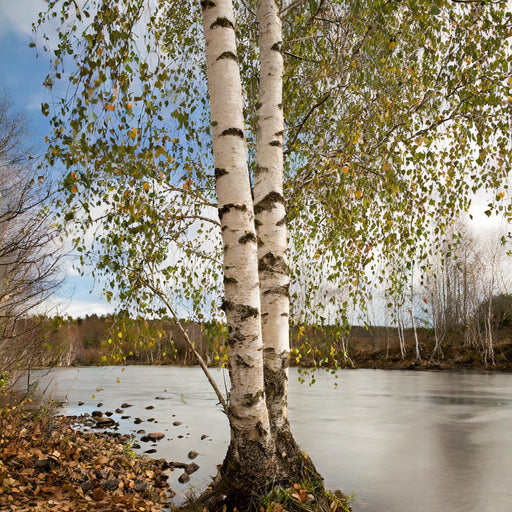
2-Stem
Probably should have been named 2-trunk clump but we went with 2-stem. This form refers to a clump that only has 2 defined trunks instead of 3 or more.
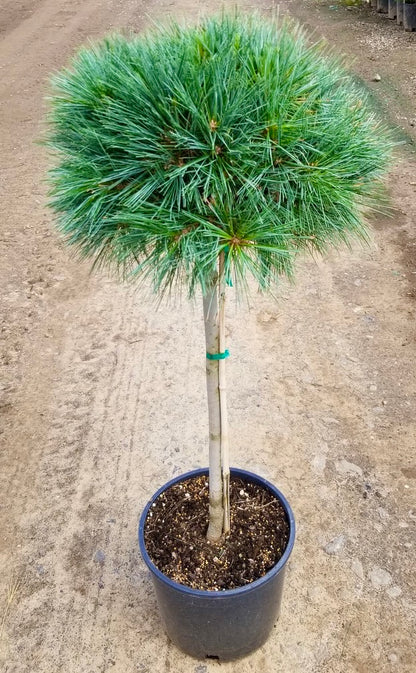
Top-Graft
Top-Graft is a technique in horticulture when you train a plant stem up to a desired height, remove the existing branches and replace with those of a more desired cultivar or form by grafting them near the top of the stem.

Spiral
Spiral or spiral form is an artistic pruning technigue often performed on evergreens like cedars, spruce and boxwood where dense branching is available to shape and create.
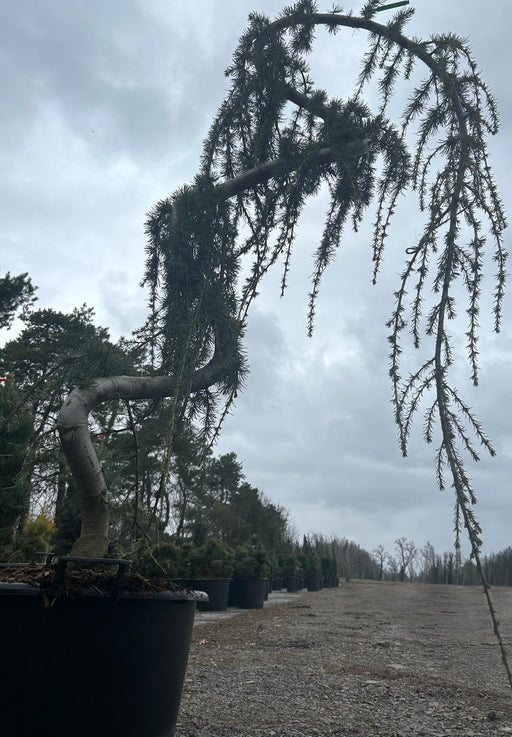
Serpentine
Serpentine or twisted is the technique of bending metal stakes to train one or more central stems of a plant in a twisted snake-like pattern.
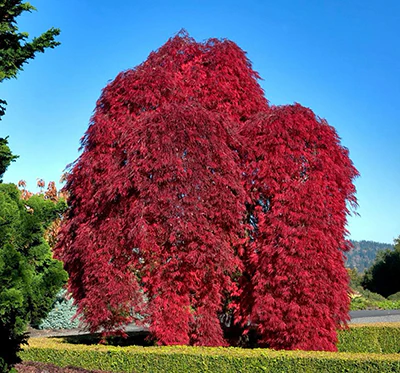
Specimen
Speciman form is the term used to define a plant that has either reached its full mature size or is a very mature plant with outstanding shape and form.

Staked
Some shrubs, evergreens, perennials and vines crawl along the ground naturally although they can be trained to grow to a desired height therefore we refer to these plants as staked.
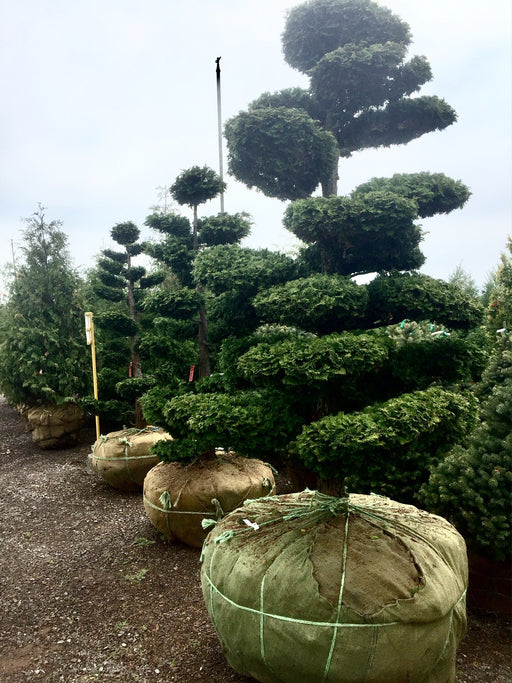
Hindu Pan
An asian pruning style similar to cloud pruning, poms and poodles. Hindu-pan is slightly different in the sense that it is done on large trees. Hindu-pan is typically practiced on trees from the Pinus genus.
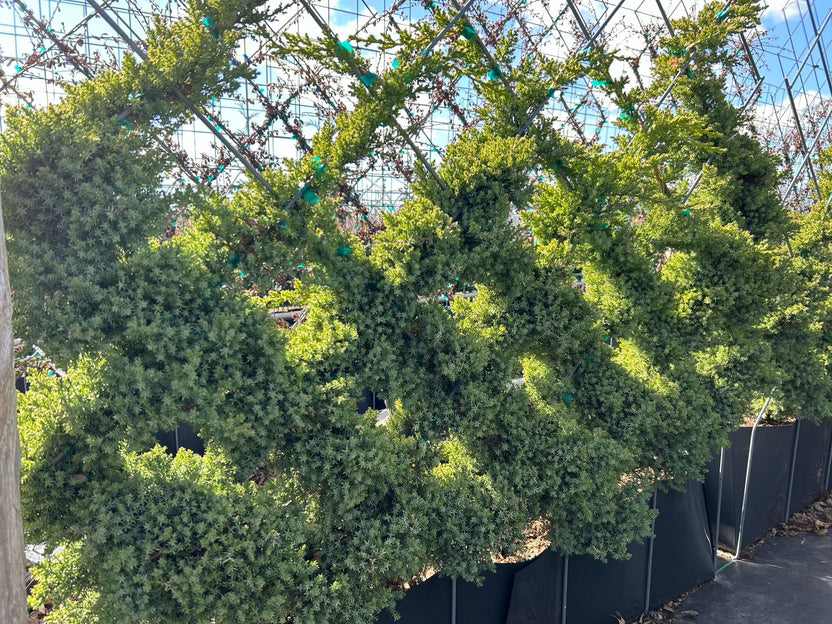
Espalier
Espalier is the art of training trees, evergreens, and shrubs into a formal shape along a trellis or fence. This method of pruning allows larger trees to be planted in narrower landscapes than what you could in it's mature natural form. This method comes with more maintenance in the landscape although the benefits of natural privacy and beauty are worth the extra effort.
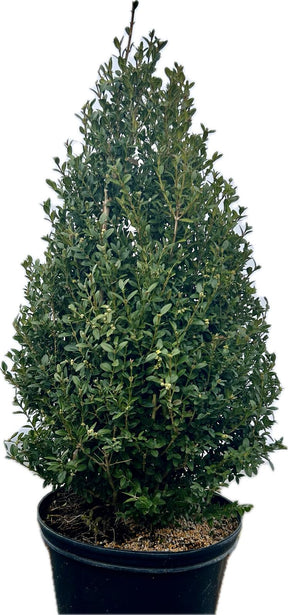
Pyramid
Pyramid form is the technique of pruning or shaping plants into the shape of a pyramid or cone for more formal gardens.
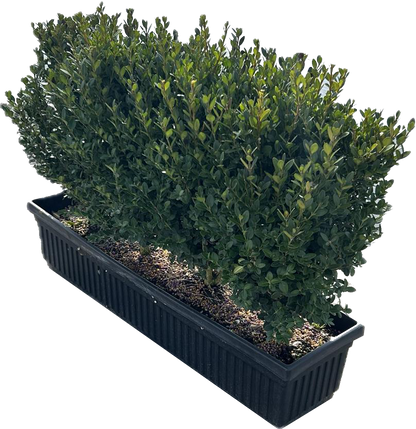
Ready Hedge
The method of planting 3 or more equal plants in a planter box or trough and shaped for an instant hedge ready for your landscape.
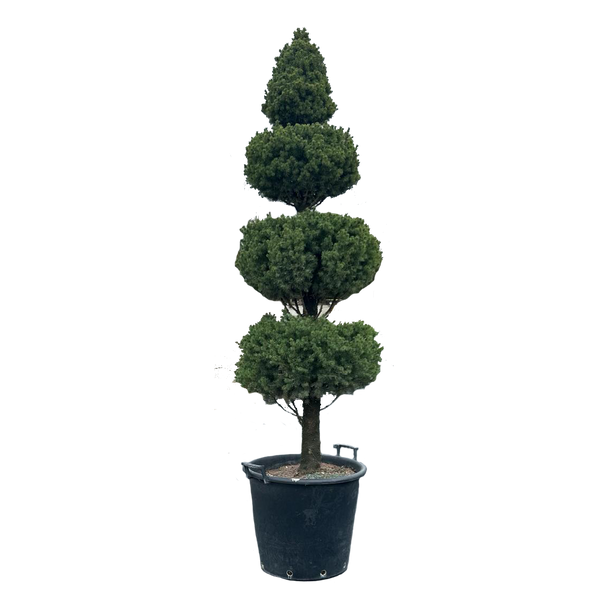
2-4 Tier
2,3 and 4 tiered refers to a plant that has been grafted or pruned to to have 2 or more distinct groupings of branches along the central main stem, often pruned and sheared into spherical shapes.

Whip
Whip is a young tree, sold as bareroot, that has a single thin trunk and has not developed any side branches yet.
Height & Caliper
Most of our plants are measured in either height or caliper, but never both. Larger trees are often measured in caliper, and shrubs and evergreens are measured mostly by height.
Note: Some plants naturally grow wider than they do tall and in these situations the cm measurement refers to width not height.
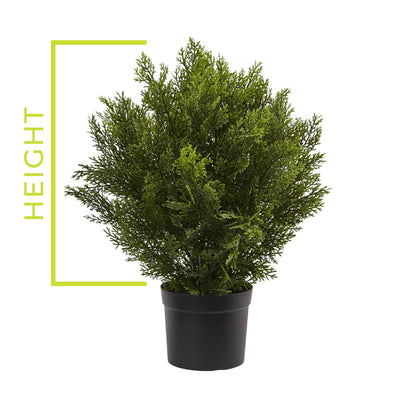
Height
Measured in centimetres (cm)
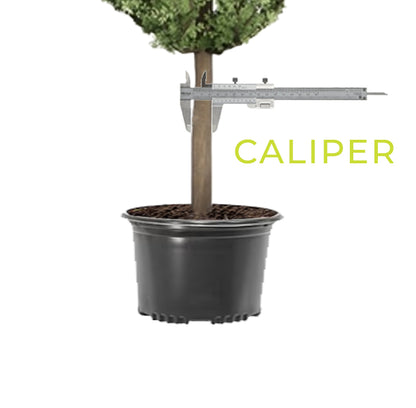
Caliper
The diameter of a tree trunk taken at 15-20cm up from the crown of the roots, measured in millimetres (mm)
Packaging
Our plants are delivered in one of many packaging styles. Note that some of these packages are heavy and will require machinery to unload and move around your property. It is recommended to hire a professional landscaper when purchasing larger trees.
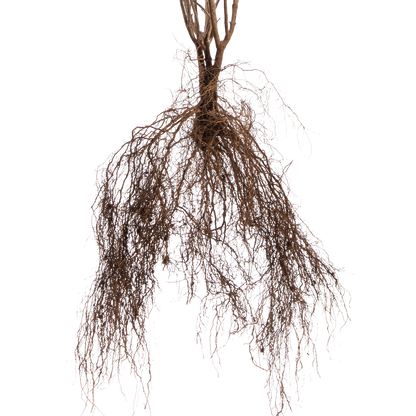
Bareroot (BR)
No soil is attached to the roots. This packaging is only offered in the early spring and late fall during the dormant season. With proper bareroot planting guidelines this can be an economical solution.
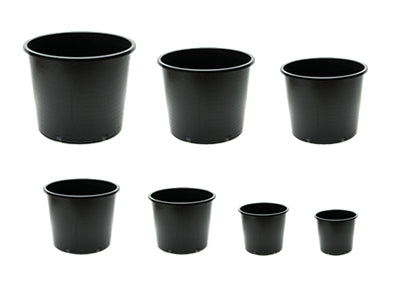
Gallons (Gal)
Refers to the approximate amount of soil volume per pot. Smallest is 1 gallon (super easy to plant) all the way up to 45 gallon which may take some extra help to plant.
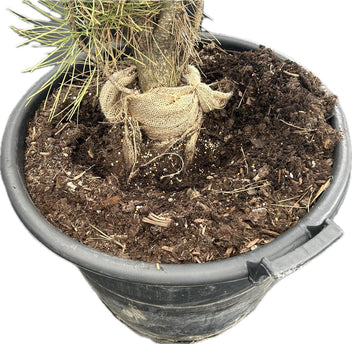
Ball & Burlap in Container (BBC)
A field grown plant that has been dug in spring or fall. The roots and soil have been wrapped in burlap and often set in a plastic pot for handling easier. This is a heavier package and will need two or more people to move around when planting or possibly machinery.
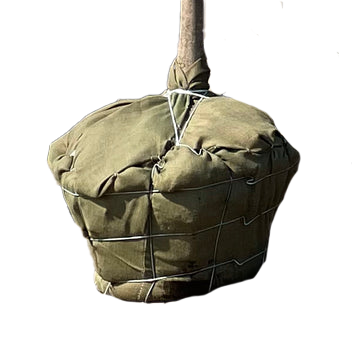
Wire Basket (WB)
A field grown plant that has been dug in spring or fall. The roots and soil have been wrapped in burlap and held together in a wire basket. This is a heavier package and will need a machine to move around when planting.
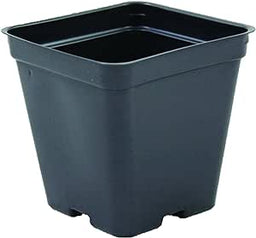
Potted (PT)
Round or square plastic pots sold individually or in carrying trays (6cm-32/tray), (9cm-18/tray),(10cm-15/tray), (11cm-10/tray)
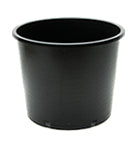
Litre (LTR)
Square or round plastic pots sold individually or in trays of 10.
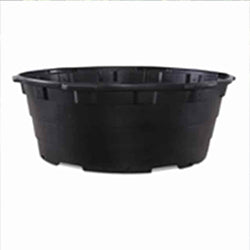
18cm Pan Pot (18PN)
18cm wide x 9cm deep plastic pots for shallow rooting perennials.
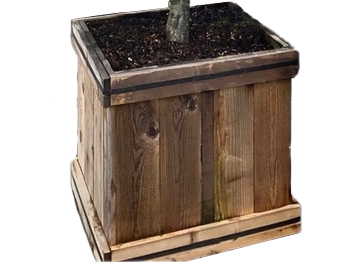
Crate (CR)
Square wooden crates (hand built) for mature specimen plants. Size widths range from 12x12" (CR12) to 60x60" (CR60)
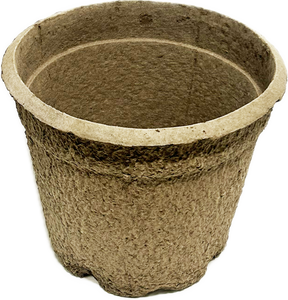
Fibre Pot (FP)
Pots made from natural plant fibers such as peat moss, wood pulp, or coconut coir, which are pressed and formed into shape.
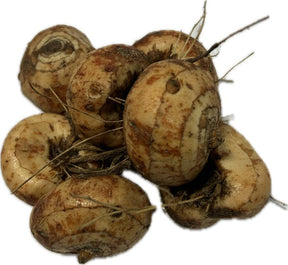
Flower Bulb (BULB)
A flower bulb is an underground storage structure containing a plant embryo and nutrients, enabling it to grow into a flowering plant.
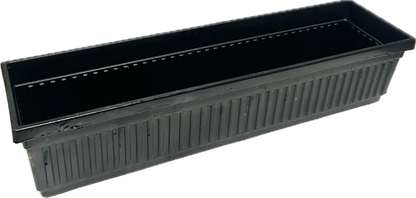
Planter Box (PBX)
Used for Hedging plants like Boxwood and Taxus. 3-5 plants per box, trimmed already into a hedge.
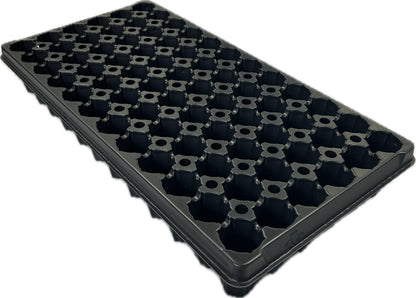
Plug (PL)
Trays of smaller plants in various quantities per tray. PL72 = 72 per tray (smallest plug size) PL15 = 15 per tray (largest plug size).Note: We have plugs priced individually.

